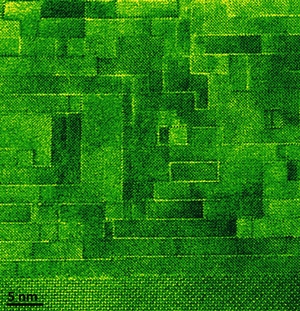
An international team of researchers based at Cornell University in Ithaca, N.Y. has announced the creation of a new tunable dielectric material—an insulator whose ability to store electrical charge changes when a voltage is applied—they say could benefit capacitor performance in smartphones and other electronic devices.
“This is a radically different material compared to what people have been using for decades,” Darrell Schlom, the Herbert Fisk Johnson Professor of Industrial Chemistry at Cornell, who led the international team, said. “What we have discovered is the world’s lowest-loss tunable dielectric.”
The new material, an artificially layered composition of strontium titanium oxide, was created by “spraying” atoms onto a surface to create individual atomic layers. By comparison, commercially used tunable dielectric materials are not made of layers and contain barium as well as strontium, oxygen and proprietary additives. This composition, says Schlom, can lead to defects in thin films of these materials that waste power and lower the films’ performance in circuits. The new layered material, in contrast, is “forgiving” with regard to defects and offers at least five times the performance of commercial tunable capacitors. Researchers believe the material could improve the performance of microwave circuit capacitors found in cell phones and open up new possibilities for wireless communication at higher frequencies.
However, says Schlom, the proof-of-principle demonstration of the new material requires further testing to confirm how the defects in the material are being mitigated and how to push its performance even further.
“It is clear that we have discovered a killer material, but it is likely that even better tunable dielectrics can be found using our approach,” he said.
The paper, “Exploiting Dimensionality and Defect Mitigation to Create Tunable Microwave Dielectrics,” published this month in the online journal Nature includes input from researchers at Pennsylvania State University; University of Maryland, College Park; Temple University, the University of Texas at Austin, the Center for Nanophase Materials Sciences and the National Institute of Standards and Technology, as well as several European institutions including the Leibniz Institute for Crystal Growth in Germany, Universitat Politècnica de Catalunya in Spain and the Institute of Physics ASCR in the Czech Republic.






